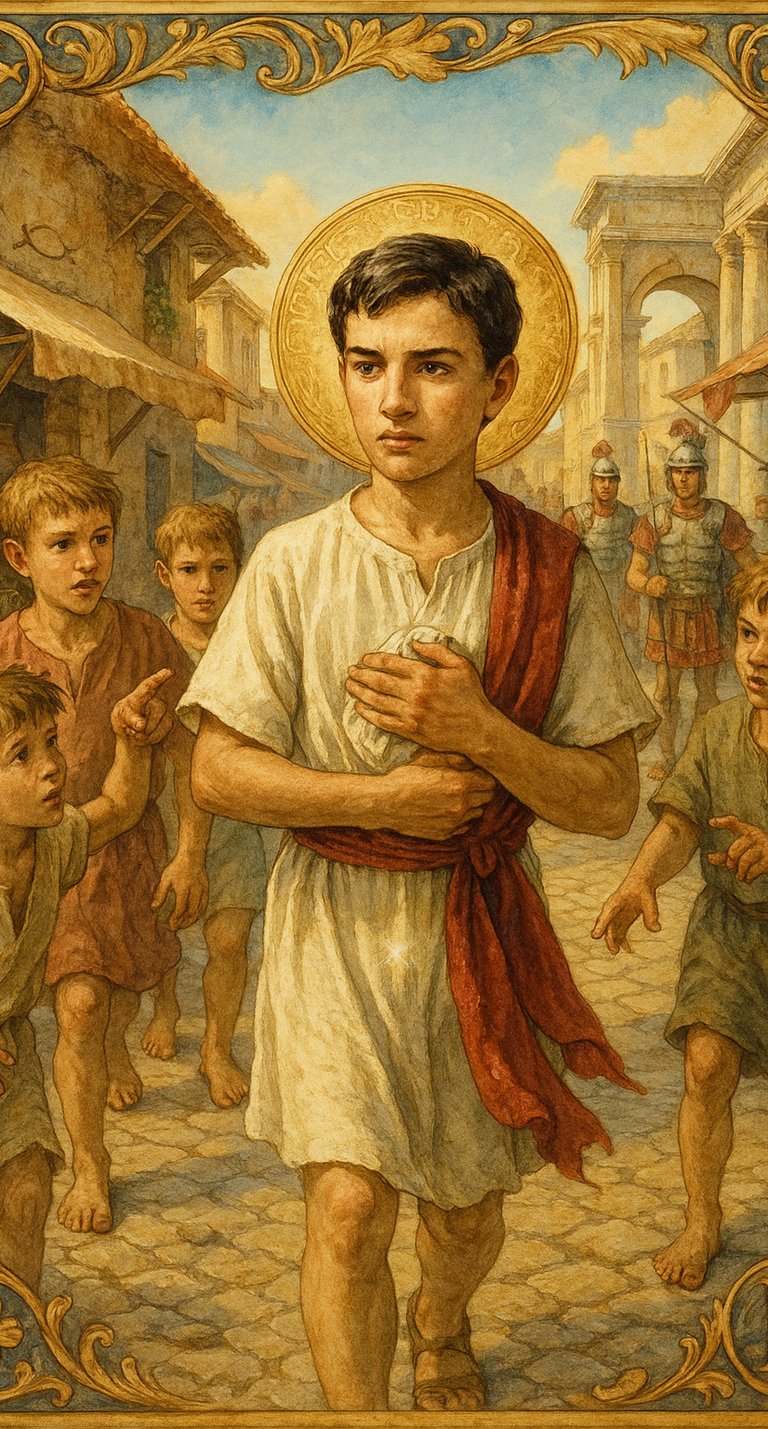St. Tarcisius: Roman Martyr of the Eucharist
Feast Day: August 15 | Patron of altar servers, first communicants, defenders of the Eucharist
Halo & Light Studios
8/15/20252 min read


Click Link for a reel of Daily Dose of Saints and Faithful Art:
https://youtube.com/shorts/6hLzmF0H-zk
In the middle of the 3rd century, Rome was a city of marble temples, bustling markets, and hidden fear. Emperor Valerian’s edicts against Christians had unleashed a wave of arrests and executions. The faithful met in secret, often in the underground Catacombs of Callixtus, to celebrate the Sacred Mysteries. Many of their brothers and sisters were imprisoned for refusing to worship the emperor—and they longed to receive the Body and Blood of Christ.
On one such day, after a clandestine Mass, the priest asked who could bring the consecrated Hosts to those in chains. No one volunteered at first; the mission was perilous. If the Eucharist was discovered, it would be desecrated. Then a young acolyte stepped forward: Tarcisius. His exact age is unknown—perhaps 12, perhaps 15—but his courage was beyond his years. “Send me,” he said, his voice steady.
The priest placed the Sacred Hosts in a linen cloth, which Tarcisius hid close to his heart beneath his tunic. He was warned not to speak to anyone on the way. Leaving the cool dimness of the catacombs, he emerged into the sunlit streets of Rome.
But along the road, a group of pagan boys—some say his former playmates—called out to him. They saw he was guarding something and demanded to see it. Tarcisius refused. They pressed harder. When he still would not yield, they struck him with their fists, then with stones and clubs. He fell, shielding the Eucharist with his whole body.
A Christian soldier, secretly watching, drove off the mob and carried the boy toward safety. But it was too late. Tarcisius’ injuries were mortal. Yet when they looked for the Eucharist, it was gone. Tradition says it vanished from his hands, protected by God Himself from desecration.
Pope St. Damasus, writing a century later, honored him as one “who preferred to give up his life rather than betray the Body of Christ to rabid dogs.” His body was laid in the Catacomb of Callixtus, where pilgrims came to pray at the tomb of the boy-martyr.
Today, St. Tarcisius stands as a shining witness to Eucharistic love—reminding us that the Real Presence is not a symbol but a Person, worthy of our reverence, devotion, and even our lives.
In an age when belief in the Eucharist can waver, Tarcisius asks us: Do we carry Christ close to our hearts as he did—willing to defend Him at any cost?
